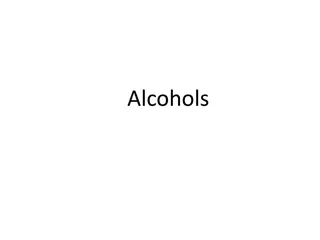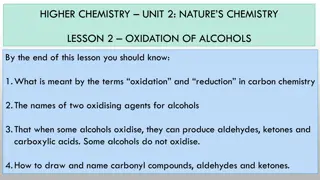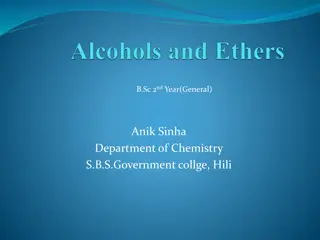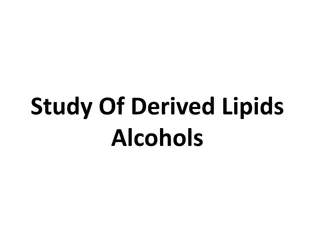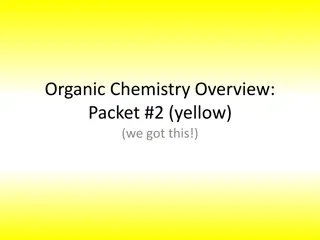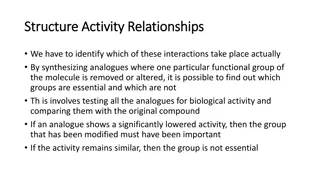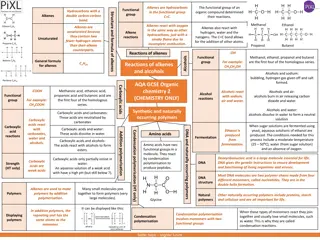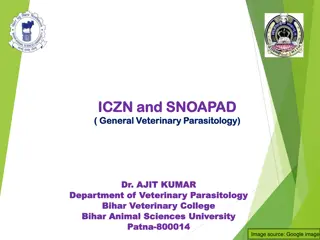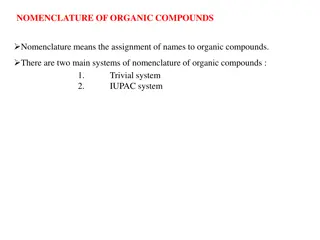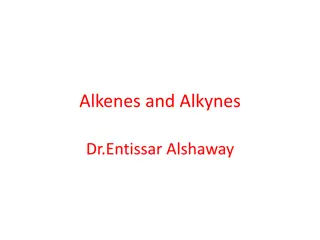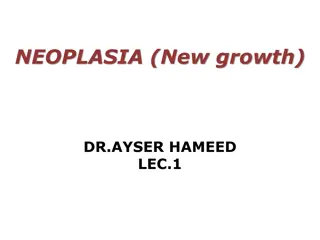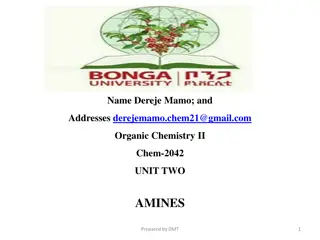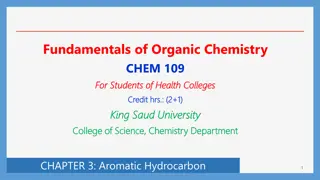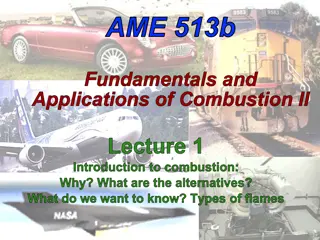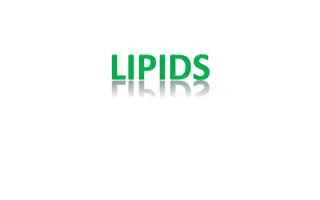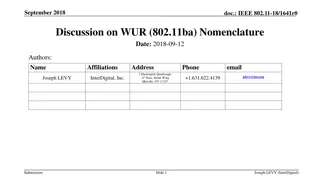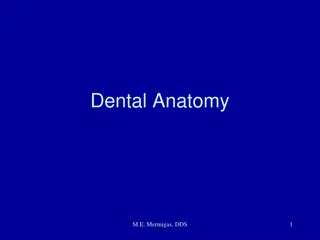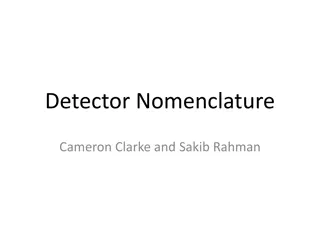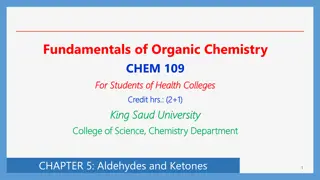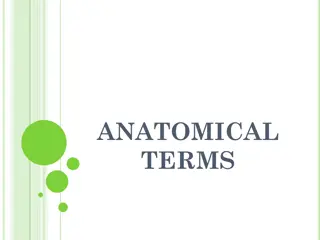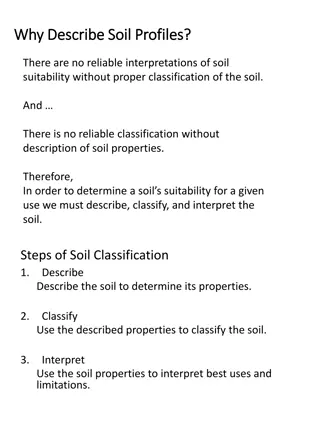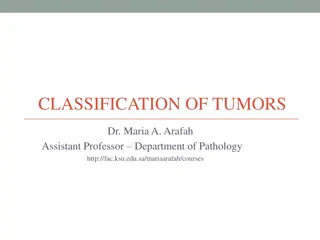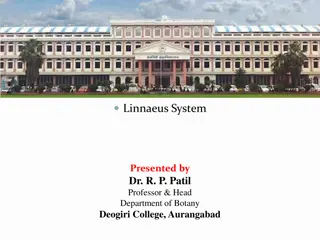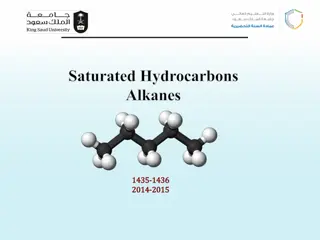Understanding Alcohols: Classification, Nomenclature, and Uses
Alcohols are organic compounds with an -OH functional group attached to a carbon atom. They are classified as primary, secondary, or tertiary based on the carbon the -OH group is bonded to. The IUPAC nomenclature for alcohols involves changing the ending of an alkane to -ol. Alcohols like methanol, ethanol, and isopropyl alcohol are widely used in various applications. Phenols are more acidic than ordinary alcohols. The manifestation of acidity and oxidation of alcohols are important processes in chemistry.
Download Presentation

Please find below an Image/Link to download the presentation.
The content on the website is provided AS IS for your information and personal use only. It may not be sold, licensed, or shared on other websites without obtaining consent from the author. Download presentation by click this link. If you encounter any issues during the download, it is possible that the publisher has removed the file from their server.
E N D
Presentation Transcript
EXPERIMENT EXPERIMENT 2 2 IDENTIFICATION OF ALCOHOLS IDENTIFICATION OF ALCOHOLS
Alcohols are organic compounds containing an -OH functional group bonded to a carbon atom. Alcohols may be classified as primary, secondary or tertiary, depending on what kind of carbon the OH group is attached to. As shown below: Primary attached to a primary carbon atom, a carbon bonded to one other carbon atom. Secondary attached to a secondary carbon atom, a carbon attached to two other carbon atoms from the 2 R (CH3-), Primary alcohol alcohol: RCH2OH the R , an alkyl group, and the OH are Secondary alcohol alcohol: R2CHOH, the 2 R alkyl groups, and the -OH are
Tertiary OH are attached to a tertiary carbon atom a carbon attached to three other carbon atoms from the 3 R (CH3-). Tertiary alcohol alcohol: : R3COH the 3 R alkyl groups, and the CH3 CH3CCH3 CH3CHCH3 CH3CH2OH OH OH tert-butyl alcohol Tertiary alcohol Ethanol Primary alcohol 2-Propanol Secondary alcohol
The International Union of Pure and Applied Chemistry (IUPAC) method of nomenclature for alcohols use the ending ol. Change the e ending of an alkane to ol (i.e methane to methanol, ethane to ethanol , Propane to Propanol ect ).
Alcohols are important commercially and are used as solvents, drugs and disinfectants. The most widely used alcohols are methanol or methyl alcohol, CH3OH; ethanol or ethyl alcohol, CH3CH2OH; and 2-propanol or isopropyl alcohol, (CH3)2CH2OH. Methyl alcohol is found in automotive products such as antifreeze and dry gas . Ethyl alcohol is used as a solvent for drugs and chemicals, but is more popularly known for its effects in alcoholic beverages. Isopropyl alcohol, also known as rubbing alcohol is an antiseptic.
Manifestation of acidity. Ordinary alcohols do not exhibit much acidity. They are generally neutral in aqueous solutions. Phenols, on the other hand, are much more acidic ,Why? and will react with bases such as sodium hydroxide to form soluble salts. This difference is a good way to distinguish between the two types of compounds
Oxidation Oxidation: : Oxidation of alcohols by strong oxidants such as K2Cr2O7 in H2SO4 is possible, but differs depending on the degree of alcohol. Examples a, b, and c below show how a primary, secondary, and tertiary alcohol respectively respond to treatment of oxidants. If a reaction has occurred using K2Cr2O7 in H2SO4, there is a color change from orange to green.
Lucas Test This test is for low molecular weight alcohols and it distinguishes the rates of reaction of alcohols with the Lucas reagent (HCl and ZnCl2). Positive indicator of the reaction is the formation of a water insoluble alkyl chloride as cloudiness or a precipitate. The formation of an alkyl chloride with tertiary alcohol is very rapid, followed by the secondary alcohol that may take from 5 to 20 minutes to form visible cloudiness. Primary alcohols do not react with Lucas reagent or it may show very little result in a very long Test: time. The chemical reaction involves replacing the OH group of the alcohol with a chloride ion from hydrochloric acid (HCl), forming an alkyl chloride, as shown in the following equation.


